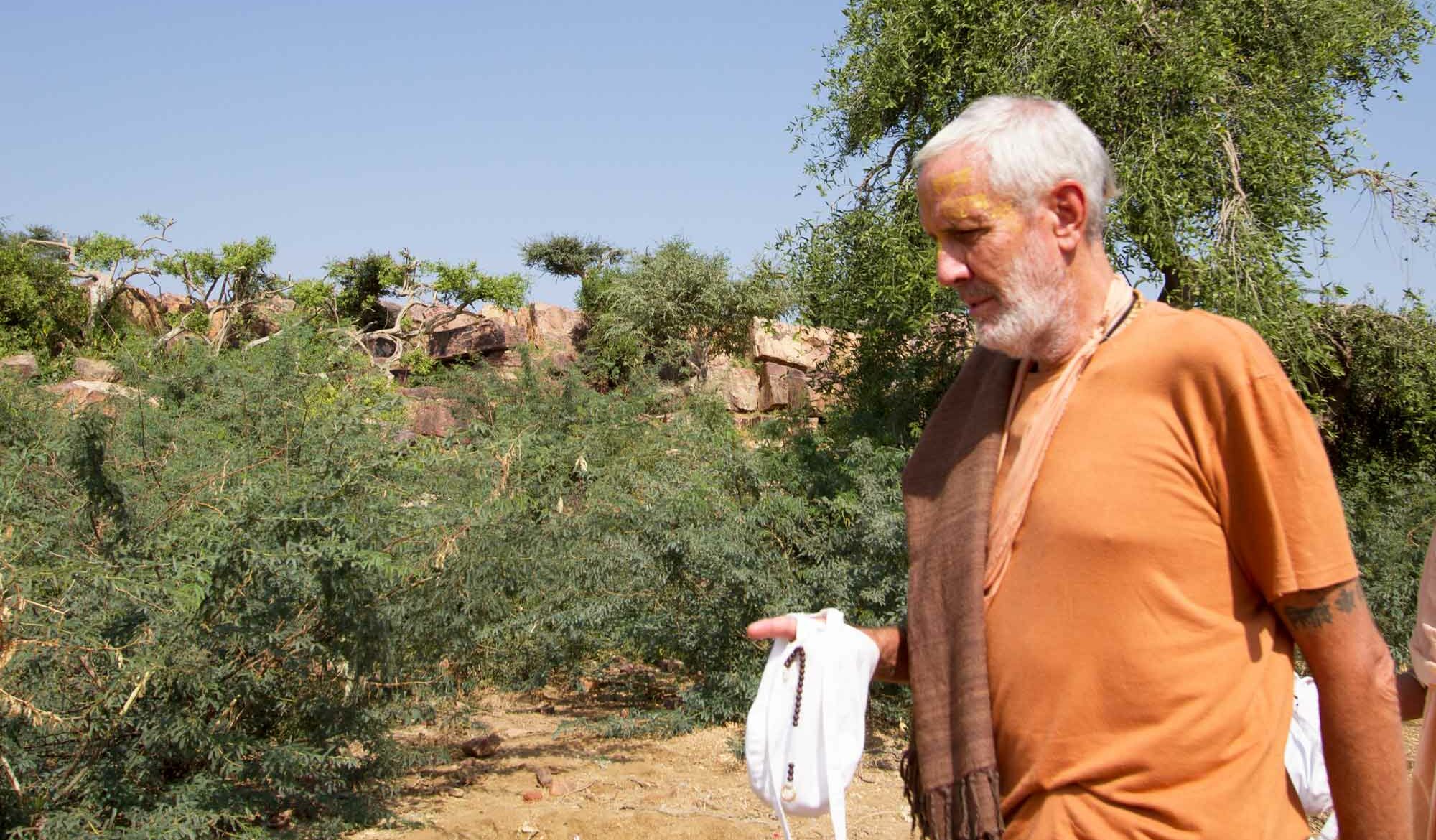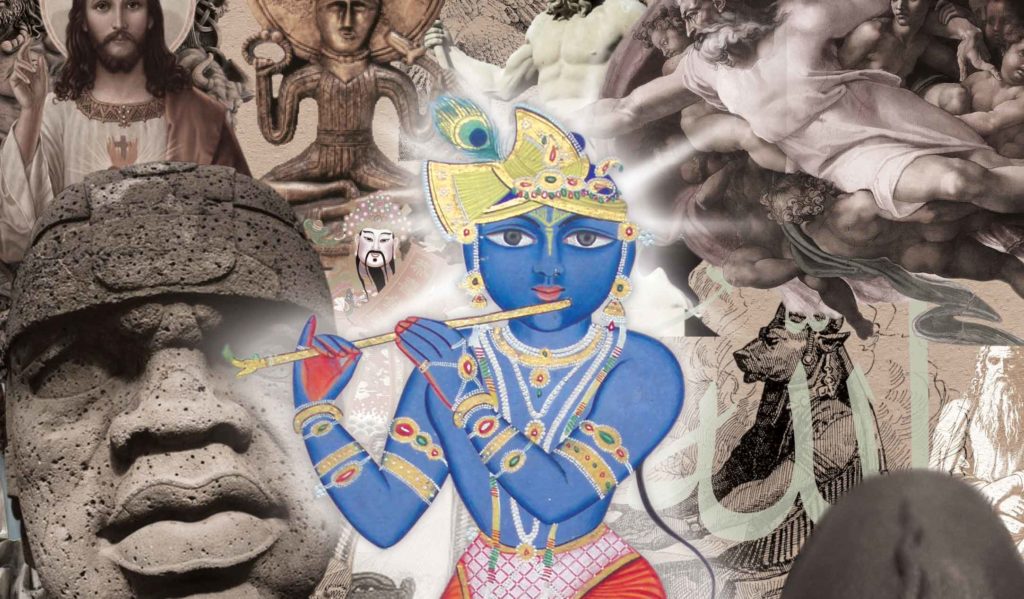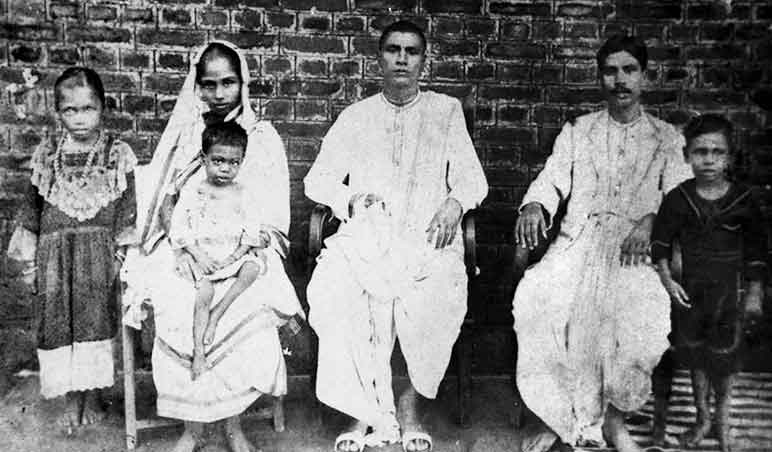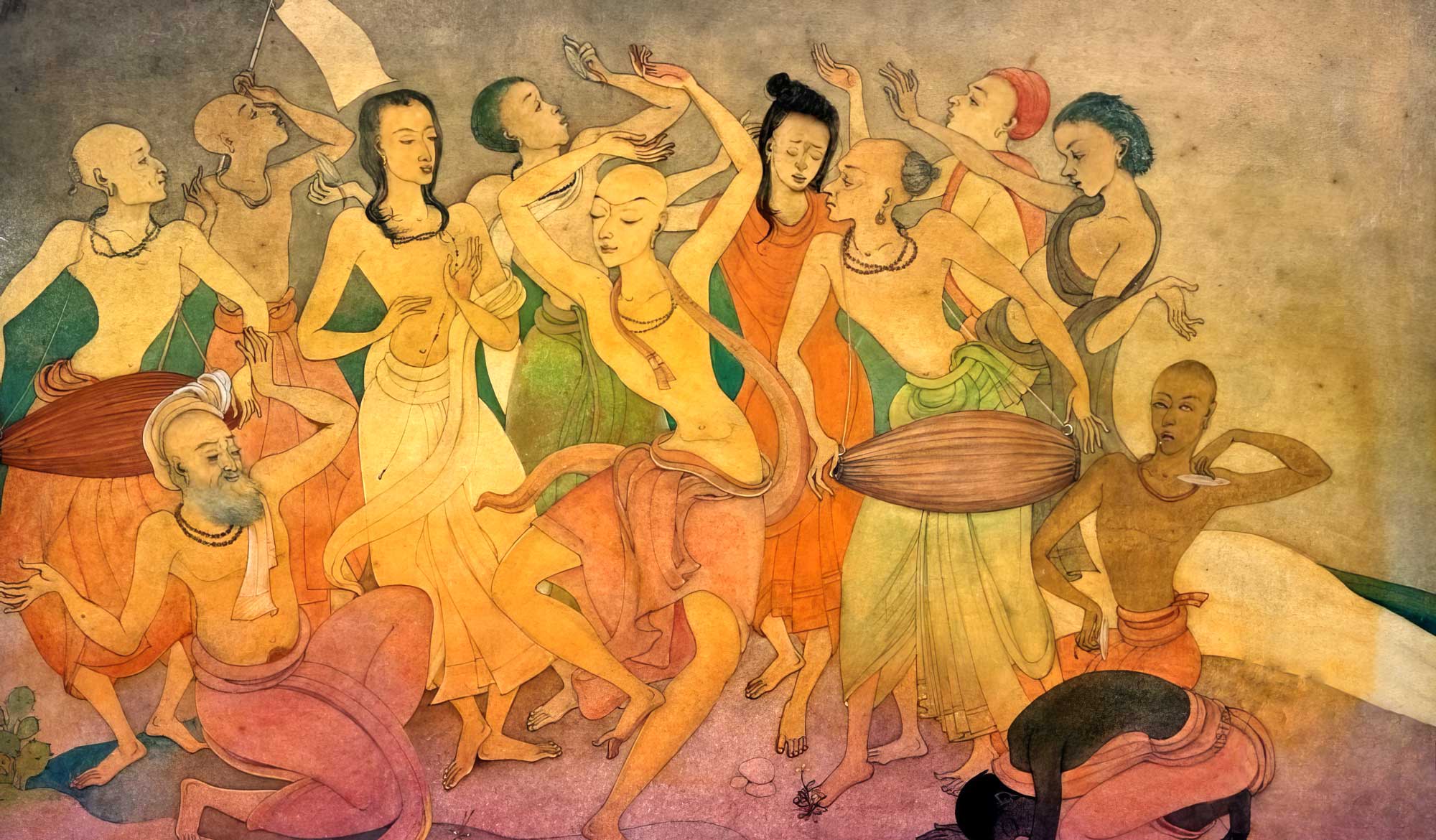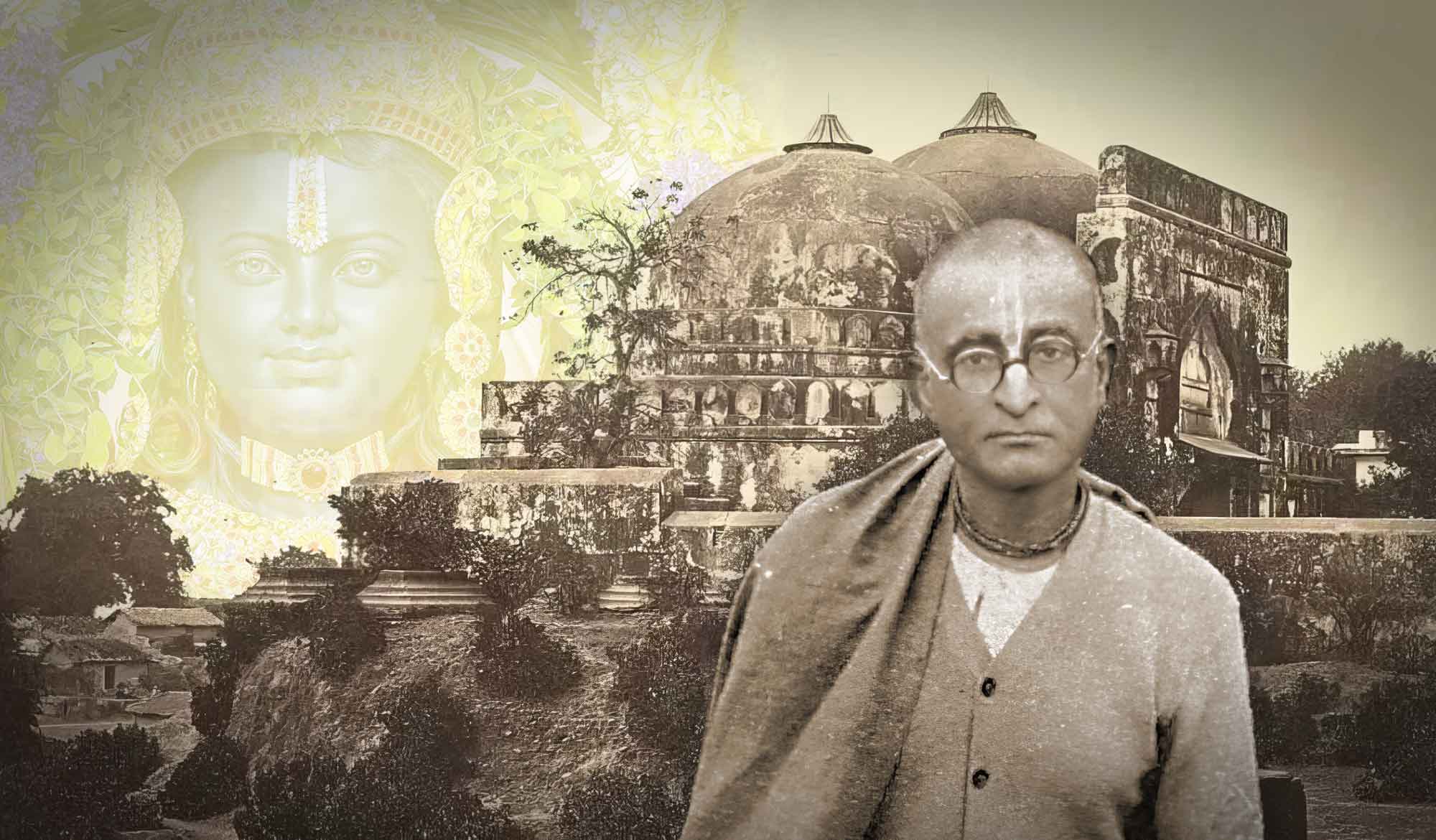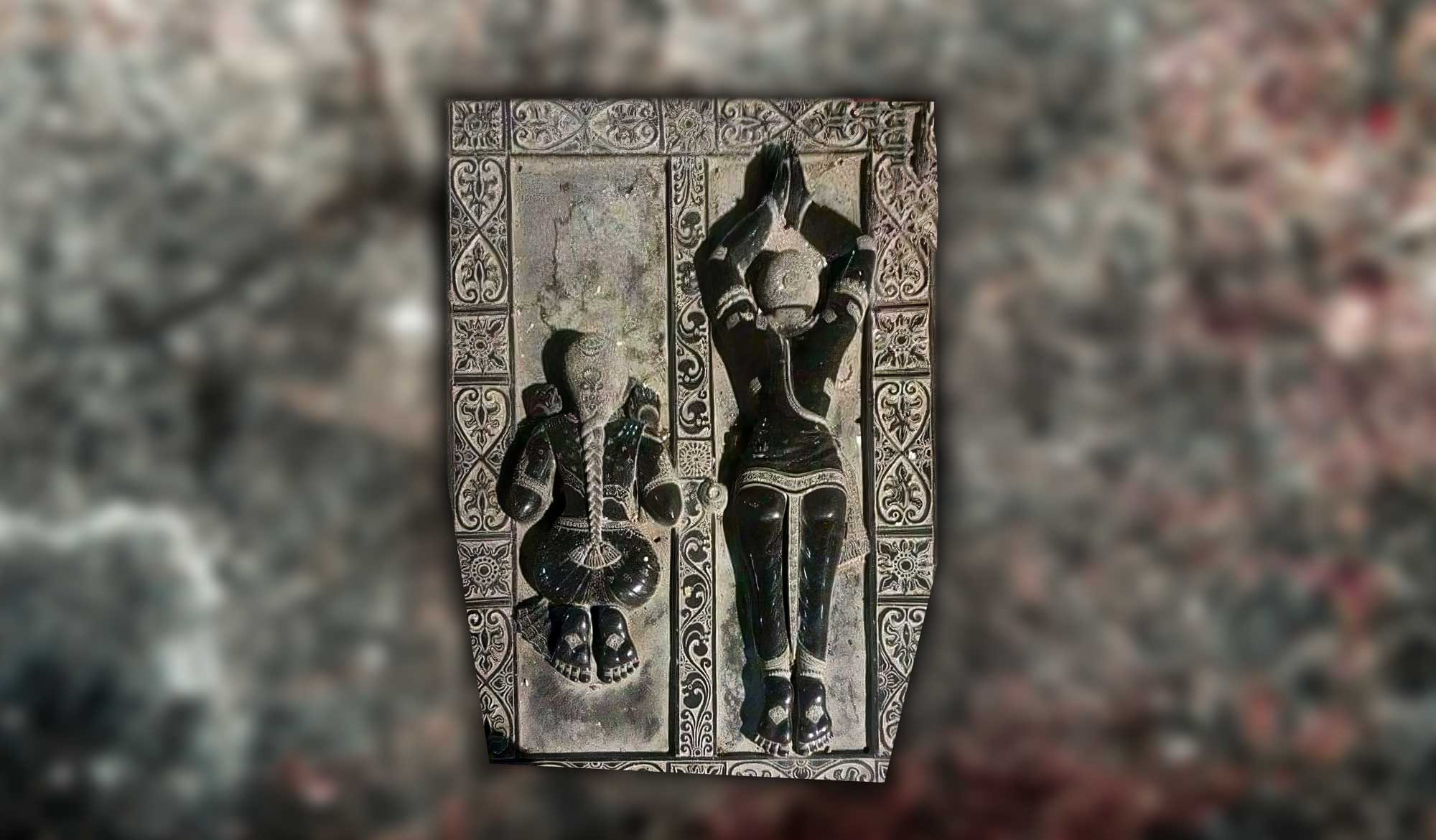Overview
Pilgrimage to Vṛndāvana-dhāma’ was written by Swami B.G. Narasingha in 1992. In this essay, Narasingha Maharaja answers a question about what the mood should be when going to Śrī Vṛndāvana-dhāma.
Question: I recently read an article in Back to Godhead magazine, called ‘Preparing for a Pilgrimage,’ wherein the devotee has described the mood one should have when going to Śrī Vṛndāvana-dhāma. Have you seen that article?
Answer: yes, I have read that article also but I could not find much about the real meaning of a pilgrimage to Śrī Vṛndāvana-dhāma therein that presentation. In that article the author has mentioned; remembering Kṛṣṇa, being with Kṛṣṇa, loving Kṛṣṇa, seeing Kṛṣṇa in the everyday, associating with godbrothers and godsisters, physical austerity, praying, chanting, etc. Moreover, he has not mentioned the Six Gosvāmīs or Śrīmatī Rādhārāṇī any talk about Kṛṣṇa in Vṛndāvana is incomplete i.e., lacking in substance. The article only gives us a superficial or he’s the understanding. That may or may not be suitable for beginners or novice section where is the food for advancement? Where is the clear conception, the Gauḍīya sampradāya conception of how to approach Śrī Vṛndāvana-dhāma? I think the author himself may not be properly pointed with the Vṛndāvana conception. A pilgrimage to Śrī Vṛndāvana-dhāma means, following in the footsteps of the Six Gosvāmīs. What is that? Śrīnivāsa Ācārya says:
he rādhe vraja-devike ca lalite he nanda-sūno kutaḥ
śrī-govardhana-pādapa-tale kālindī-vane kutaḥ
ghoṣantāv iti sarvato vraja-pure khedair mahā-vihvalau
vande rūpa-sanātanau raghu-yugau śrī-jīva-gopālakau
“The Six Gosvāmīs – Rūpa, Sanātana, Raghunātha Dāsa, Jīva, Gopāla Bhaṭṭa and Raghunātha Bhaṭṭa – were wandering, chanting loudly everywhere in Vṛndāvana, shouting, “O Rādhe, Queen of Vṛndāvana, O Lalitā! O son of Nanda Mahārāja where are You now? Are You just on the hill of Govardhana, or are You under the trees on the bank of the Yamunā? Where are You?” (Ṣaḍ-Gosvāmyāṣṭakam)
This was the mood in which the Six Gosvāmīs lived in Vṛndāvana and perform devotional service. Always in the mood of separation (vipralamba). “O Radhe, O Kṛṣṇa, where are you?” Not, “Oh. here You are! Now I have you in my fist! I love you, therefore You must appear before my eyes.” No, not like that. One should never think, “I love Kṛṣṇa.” Śrī Caitanya Mahāprabhu used to say, “I have no love for Kṛṣṇa. If I actually had any love for Kṛṣṇa that I would die immediately!”
The Six Gosvāmīs, although there are the most perfect, never said, “I see Kṛṣṇa! I love Kṛṣṇa! What rather they always question their own qualifications and considering themselves the most fallen.
We should ask ourselves, “What is my love for Kṛṣṇa? Is it so great that Kṛṣṇa is bound to appear before my eyes?” Should we want to make Kṛṣṇa the object of our eye enjoyment? That also we must renounce. Following in the footsteps of the Six Gosvāmīs we must cultivate the mood of separation i.e., search for Śrī Kṛṣṇa. That was shown by Śrī Caitanya Mahaprabhu and that was followed by all His followers and that has been recommended by our ācāryas also.
The actual teachings of Śrī Caitanya and His disciplic succession is how to always feel the mood of separation. Once while walking in the forest of Vṛndāvana with some of his disciples, Śrīla A.C. Bhaktivedānta Swami Prabhupāda commented, “When the pure devotees come to Vṛndāvana they feel great separation from Kṛṣṇa.” And who is the purest devotee of Kṛṣṇa? Who feels the greatest separation from Kṛṣṇa? That is Śrīmatī Rādhārāṇī. Therefore, if we want to approach Vṛndāvana, we must first approach Śrīmatī Rādhārāṇī. She is the Queen of Vṛndāvana and the proprietor of Kṛṣṇa also.
In Vṛndāvana all the devotees chant, “Jaya Radhe!” The whole scope of the devotional field is Her domain alone. All service to Kṛṣṇa is first sanctioned by Śrīmatī Rādhārāṇī, otherwise it is not service but a mental concoction. Before we can properly understand Kṛṣṇa, we must first try to understand Rādhārāṇī and how great She is.
Everyone is trying to love Kṛṣṇa, but Kṛṣṇa is trying to love Rādhārāṇī. Just see how great She is. Each and every atom in Vṛndāvana is permeated by the beauty and bliss of Rādhārāṇī. Whatever happiness or pleasure potency is to be found in Vṛndāvana is originally due to Rādhārāṇī. To think that we can approach Kṛṣṇa and Vṛndāvana without the grace of Śrīmatī Rādhārāṇī is to be doomed to failure. She is so great that if She is merciful upon us then our success in Kṛṣṇa consciousness is assured. Therefore, our first business in coming to Vṛndāvana is to take complete shelter at the lotus feet of Śrīmatī Rādhārāṇī, and to take shelter of the mood of the Six Gosvāmīs. Prepare yourself in that way and then come to Śrī Vṛndāvana-dhāma.
Prema Dhāma Deva Stotram with the Narasiṅgha Sevaka Commentary – Verses 61-65
In verses 61 to 65 of 'Prema Dhāma Deva Stotram', Śrīla Śrīdhara Mahārāja narrates the pastime of Śrī Caitanya at Caṭaka Parvata In Purī and explains how the scriptures produced by Brahmā and Śiva are ultimately searching for the personality of Mahāprabhu who is merciful too all jīvas, no matter what their social position.
Prabhupāda Śrīla Sarasvatī Ṭhākura’s Visit to Ayodhyā
With the forthcoming observance of Śrī Rāma Navamī, we present 'Prabhupāda Śrīla Sarasvatī Ṭhākura’s Visit to Ayodhyā' written by Śrīla Bhaktisiddhānta Sarasvatī Ṭhākura Prabhupāda from The Gaudīyā magazine, Vol 3. Issue 21/ In December 1924, after visiting Benares and Prāyāga, Sarasvatī Ṭhākura visited the birth-site of Śrī Rāmācandra in Ayodhyā.
Śaraṇāgati – The Only Path to Auspiciousness
In this article, 'Śaraṇāgati - The Only Path to Auspiciousness', Dhīra Lalitā Dāsī analyses the process of śaraṇāgati (surrender) beginning with śraddhā (faith). She also discusses the role of śāstra and the Vaiṣṇava in connection with surrender.
Ātma Samīkṣā – The Value of Introspection
In this article, "Ātma Samīkṣā – The Value of Introspection" Kalki Dāsa highlights the importance of introspection in the life of a devotee and especially in relation to the worldly environment that surrounds us. He also explains how transcendental sound influences our capacity to introspect.
Prema Dhāma Deva Stotram with the Narasiṅgha Sevaka Commentary – Verses 61-65
In verses 61 to 65 of 'Prema Dhāma Deva Stotram', Śrīla Śrīdhara Mahārāja narrates the pastime of Śrī Caitanya at Caṭaka Parvata In Purī and explains how the scriptures produced by Brahmā and Śiva are ultimately searching for the personality of Mahāprabhu who is merciful too all jīvas, no matter what their social position.
Prabhupāda Śrīla Sarasvatī Ṭhākura’s Visit to Ayodhyā
With the forthcoming observance of Śrī Rāma Navamī, we present 'Prabhupāda Śrīla Sarasvatī Ṭhākura’s Visit to Ayodhyā' written by Śrīla Bhaktisiddhānta Sarasvatī Ṭhākura Prabhupāda from The Gaudīyā magazine, Vol 3. Issue 21/ In December 1924, after visiting Benares and Prāyāga, Sarasvatī Ṭhākura visited the birth-site of Śrī Rāmācandra in Ayodhyā.
Śaraṇāgati – The Only Path to Auspiciousness
In this article, 'Śaraṇāgati - The Only Path to Auspiciousness', Dhīra Lalitā Dāsī analyses the process of śaraṇāgati (surrender) beginning with śraddhā (faith). She also discusses the role of śāstra and the Vaiṣṇava in connection with surrender.
Ātma Samīkṣā – The Value of Introspection
In this article, "Ātma Samīkṣā – The Value of Introspection" Kalki Dāsa highlights the importance of introspection in the life of a devotee and especially in relation to the worldly environment that surrounds us. He also explains how transcendental sound influences our capacity to introspect.


